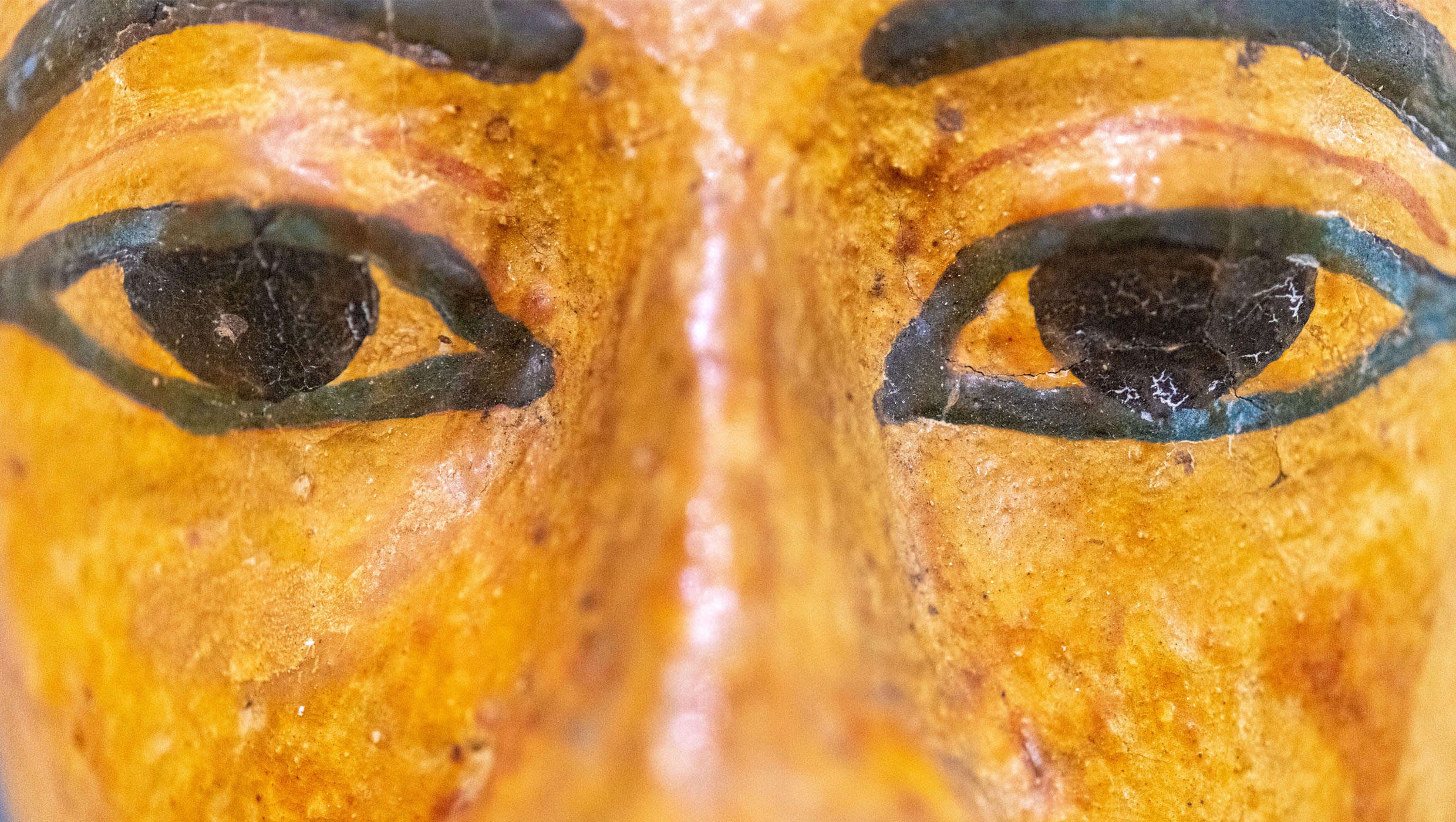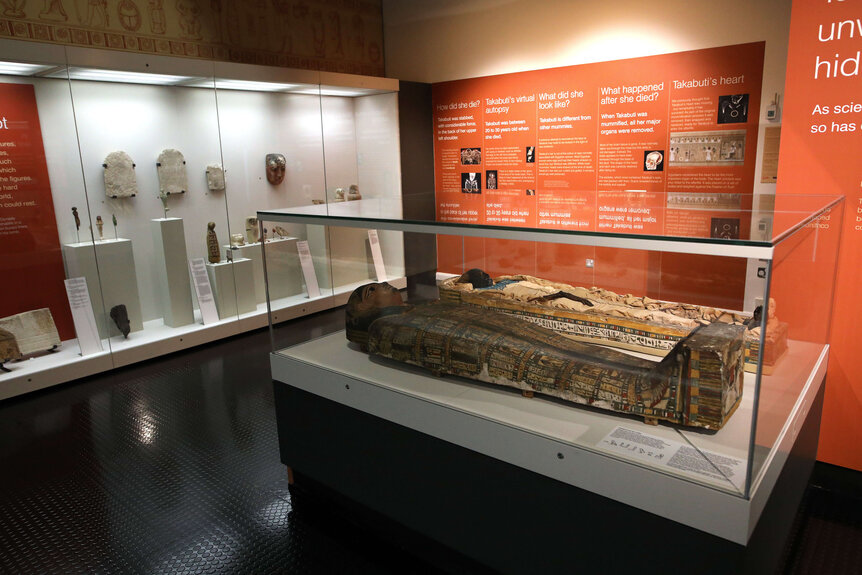Create a free profile to get unlimited access to exclusive videos, sweepstakes, and more!
Mummy murder cold case shrouded in mystery for 2,600 years has finally been solved

In a glass case at the Ulster Museum of Belfast lies the mummified body of a woman whose cause of death had been undetermined since she passed to the afterlife. She had been keeping a grisly secret.
Not all of Takabuti’s secrets emerged when she was first unwrapped in 1835. There were no signs of illness, and there also seemed to be no signs of anything else. Now Egyptologist Rosalie David and her team of researchers, who previously studied Takabuti through the eye of a CT scanner but were still unable to find out why her death was so untimely, have finally revealed that she had come to a horrific end — and it could have been an enemy attack or even a betrayal from her own people.
“She was a relatively young woman between twenty and thirty, and her teeth were in really good condition, so there was initially no evidence of the cause of death, which is not unusual, because in most mummies that we look at, you can’t find the exact cause of death,” David told SYFY WIRE.
When David and her team first performed an autopsy on the 25th Dynasty mummy, they were taken aback by how impeccably she had been preserved. Her features were remarkably lifelike and her hair was an anomaly. Most Egyptians shaved their heads to avoid lice and, if they wanted, wore wigs, some of which were really elaborate. Tabakuti was an exception. Her hair had been freshly cut and curled before she was laid to rest. An Egyptian precursor to hair gel had even been used to set it. This suggests that her hair was something of great importance to her, and a cross-section of it revealed something unexpected.
“Most Egyptians shaved their heads, but maybe she liked her hair so much, she didn’t shave it off," said David. "I think she probably was a special case because her hair was a natural reddish blonde, so she would have been quite unusual. I’m really fascinated by the reason that her hair was still there.”
It turned out that a hair analysis revealed Takabuti as having been of African, European and Asian ancestry. This has caused controversy among scientists. When geneticist Konstantina Drosou looked further into Takabuti’s genes by extracting and analyzing her ancient DNA last year, it was still intact enough to show that the mitochondrial DNA (mDNA) she inherited from her mother showed that she belonged to the rare H4A1 halplogroup. This haplogroup has never been found in an ancient Egyptian individual before. David had not expected this rare haplogroup, but the stereotype of all Egyptians having dark hair comes from paintings in which most people are wearing wigs.
"By Takabuti's time, Egypt was a real mixture of people from all over the ancient world, so she fits in," she said. "If you go back to the Old Kingdom, there’s a tomb at Giza where one of the queens is painted with long red hair. The ideal of beauty then was the dark hair that is their sort of classic beauty, but there would have been people with different colorings."
When it came to Takabuti’s mysterious death, there was more evidence to speak for someone who can no longer speak for herself. The first scans of her mummy made it possible to reconstruct her face, which showed European traits associated with H4a1, but could not see into how she lost her life. Later investigations went deeper and showed that she had been stabbed from behind, but the weapon was mistakenly thought to be a knife. The most recent exam has determined the weapon was probably an axe that could have been used by one of the Assyrian invaders who were swarming Egypt at the time. Through X-rays and CT scans, the culprit was revealed to have most likely been an axe.
"When we re-convened on the project, we identified this evidence of what looked to be a wound in the back of the ribs," David said. "It such that the cutting edge of the weapon had to be at least 3 inches. It’s in the ribs from the back, so you would have needed a handle, which would take the length of the weapon to about 4 inches, and the damage in the ribs shows that the weapon had a slightly convex edge."
What is especially shocking here is that it might have not been an Assyrian who murdered Takabuti. Because both Egyptian and Assyrian soldiers used the same kind of axe, she might have faced betrayal at the hands of one of her own people. No matter who the perpetrator was, they wielded the axe from behind and drove it into Takabuti’s ribs, which must have killed her almost instantly.
There were some things Thomas Greg, who purchased Takabuti’s mummy from the dusty streets of an Egyptian market, and and leading Egyptologist Edward Hincks got right. Hieroglyphs on Takabuti’s sarcophagus whispered that she grew up as the daughter of a priest of Amun. Priests were among the upper echelon of Egyptian society back then, and many were just below royals in prestige. It should then have been no surprise that she would be eventually be the lady of a substantial househould, which probably included servants and other help, which only the wealthy could afford. It also included meat.
"When we did an analysis on Takabuti’s hair, we were able to find out what kind of diet she had in the recent months before her death to see if there was any illness or movement between regions—this would show up in the hair," said David. "She had a typical Egyptian diet; mostly vegetarian, with some meat because she was of the upper class.”
Another thing that came with riches was mummification. Ancient Egyptians believed that the soul needed the body to reawaken in the afterlife. The more money someone could contribute to their afterlife, the more meticulously they were embalmed. This explains the effort put in to cover Takabuti’s wound as much as possible with resins and packing the area with linens, much like the brutally murdered pharaoh Seqenenre Taa II. Her heart was removed, embalmed and then put back in her chest, because the heart was thought to be the epicenter of the soul that would be weighed and judged in the underworld.
The scientists who reconstructed her face noticed it was overcast with a shadow of sadness, and that might have reflected the tragedy of her last moments. Though Takabuti’s death was a nightmare that happened in her final waking moments, the years of hypothesizing and investigation that went into finding out everything about her possible were not only about how she died. They were about how she lived.
Wherever Takabuti is among her gods, a smile may finally be dancing across her lips.



























